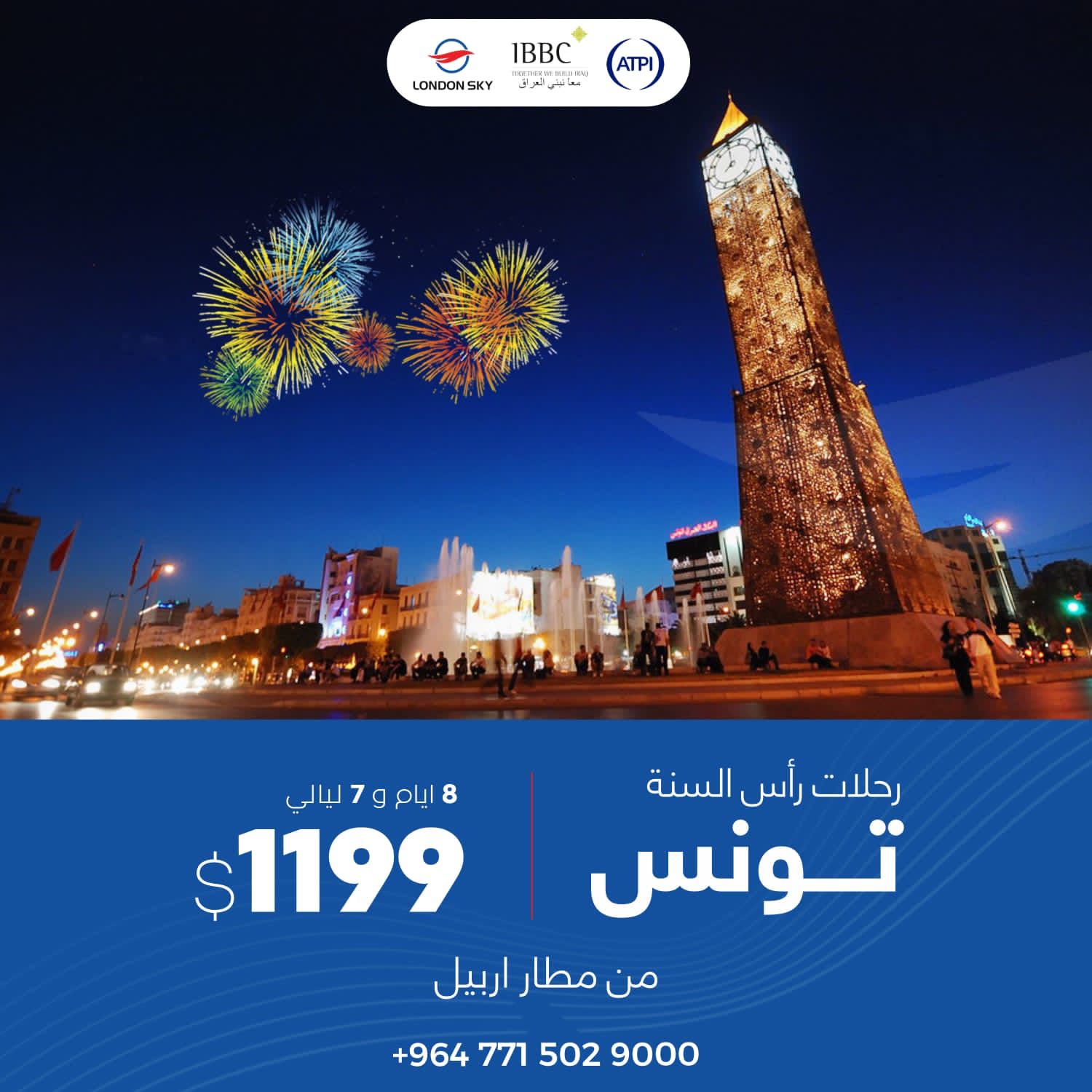Erbil, Zaza Street - Next to Ministry of Education
44001
Erbil, Iraq
+964 771 332 7000
info@londonskyco.com
Tunisia, situated in North Africa, is a country with a diverse landscape, historic significance, and a rich cultural blend of Arab, Berber, and Mediterranean influences. Known for landmarks like Carthage and El Djem, it is a popular tourist destination offering a mix of history, coastal beauty, and desert landscapes.
Tunisia, a North African gem, combines ancient history with contemporary allure. From the ruins of Carthage to the bustling Medina of Tunis, the country unfolds its cultural tapestry. With a Mediterranean coastline, fertile plains, and the vast Sahara Desert, Tunisia's geography is as diverse as its heritage. Arab, Berber, and Mediterranean influences converge in vibrant traditions, music, and cuisine. The country's resilience and role in the Arab Spring underline its modern significance, while historic sites and beautiful landscapes make Tunisia a captivating destination for those seeking a blend of history, culture, and natural beauty.
Experiencing Tunisia is a journey through time and culture. Wander through the ancient ruins of Carthage, where the echoes of past civilizations linger. Immerse yourself in the labyrinthine alleys of the Medina of Tunis, a UNESCO treasure. Feel the warmth of the Mediterranean sun on the white-sand beaches and explore the vibrant markets filled with spices and handicrafts.
Tunisia experiences a Mediterranean climate, characterized by hot, dry summers and mild, wet winters. Here's a brief overview:
Summer (June to August):
Autumn (September to November):
Winter (December to February):
Spring (March to May):
Coastal areas generally experience milder temperatures compared to inland regions. The southern part of the country, including the Sahara Desert, can be extremely hot in summer and cooler in winter. It's advisable to check specific forecasts for the region you plan to visit, as weather conditions can vary.
Hotels provide accommodation services for travelers, offering rooms, amenities, and various services for a comfortable stay. They range from budget-friendly options to luxury establishments, catering to diverse preferences and budgets. Hotels typically offer facilities such as restaurants, bars, fitness centers, and conference rooms. Online booking platforms make it convenient for travelers to choose accommodations based on location, price, and guest reviews. The hospitality industry plays a crucial role in the travel experience, providing a temporary home for individuals and families during their journeys.
Road Transport:
Public Transit:
Air Travel:
Maritime Transport:
Rail Transport:
Cycling and Walking:
Culture is a complex and multifaceted concept that encompasses the shared beliefs, values, customs, behaviors, and artifacts of a particular group of people. It shapes the way individuals within a society perceive the world and interact with one another. Here's a general overview of cultural aspects:
Language:
Social Organization:
Religion and Spirituality:
Art and Expression:
Cuisine:
Cultural Symbols:
Education and Knowledge:
Email newsletters offer a formal and widely accessible platform, while WhatsApp newsletters provide instant and personal engagement, especially suited for visual content.
Copyright 2024 LondonSky. All Rights Reserved.
